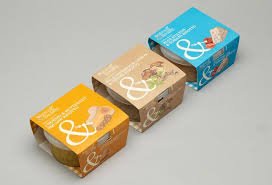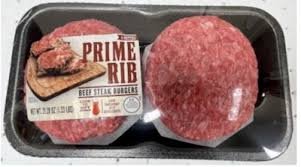1. Introduction
beckett packaging is well known among machining, tooling, and industrial supply sectors, but many buyers don’t fully understand all its options, trade-offs, or how to pick the best packaging for their specific needs. In this guide I’ll draw on product catalogs, technical data, and case studies to help you choose with confidence.
2. What is Beckett Packaging / Background & Ownership
Beckett Packaging is a division of MOCAP LLC, also operating under the Cleartec packaging brand. Its roots include the former William Beckett Plastics (UK), acquired in 2015 by MOCAP. The company manufactures a wide range of protective plastic packaging solutions for industrial & retail clients, using processes like extrusion, blow-molding, injection molding, etc. They have manufacturing/sales/distribution in North America, Europe, United Kingdom, Latin America, and China.
3. Beckett’s Product Lines – Overview
Here’s a breakdown of the main series / product types offered by Beckett Packaging / Cleartec, with what makes each unique:
| Series / Product | What it is | Key Use-Cases | Notable Features |
|---|---|---|---|
| SQT – Square Telescopic Tubes | Square-shaped adjustable telescopic tubes | Long tools, taps, etc. that are best stored vertically or boxed; when stackable; display in rack | Adjustable length; durable plastic; good stacking; shape helps storage efficiency. |
| RP – Rectangular Telescopics | Rectangular style tubes | Long saw blades; tools that require flat orientation; smart display in rectangular layout | Similar adjustability; more efficient packing on shelves; prevents rolling. |
| RT / RTL – Round / Round Locking Telescopic Tubes | Round tubes, with locking features (RTL) | Tools that are long and thin; packaging where round is easier; where lid security is important | Locking caps; varying diameters; round aesthetics. |
| Snap-Paks (SP) | Compartments with hinged or snap lids | Sets of drills / small tools; kits; retail packaging where individual access is useful | Compartments; reusable; good |
| Insert Boxes & Tool Cases | Plastic or foam insert boxes for holding tools securely | Precision tools; sensitive tools; when tools must not shift in transit | Custom foam inserts; secure holding; sometimes stackable. |
| Grip-Paks & Grip-Pak Centered | Individual containers that center tool inside | Solid carbide bits, drills; fragile tools needing protection both ends | Center plug & beveled cap; heavy wall; universal fit for different diameters. |
| Protective Tool Covers & Sleeves | Covers/sleeves that can stretch over tools of varying sizes | Storage / drawer protection; protection from abrasives, dust; short shipping runs | Fit-range covers; stretch/shrink design; easy to apply. |
4. Materials, Construction & Technical Specs
Plastics & Material Types
- PVC (Polyvinyl Chloride) – often used for cost-effective clarity; good for display; less flexible; may have issues with yellowing.
- Polypropylene (PP), including clarified PP – clearer, more durable; better resistance to impact and chemicals; good for display and reuse.
- High-Density Polyethylene (HDPE) – more opaque choices; stronger impact resistance; useful for rugged protection.
Wall Thickness, Impact & Moisture Protection
- Heavy-wall tubes offer better protection against crushing, moisture ingress, and impact.
- Thin or light-wall is cheaper, lighter, better for display / shipping cost but less protection.
Certifications & Quality Standards
- Beckett / Cleartec are under MOCAP’s quality system, certified ISO 9001:2015.
- RoHS, REACH compliance for plastics used.

5. How to Choose the Right Product: Decision Framework
Here is a step-by-step decision guide:
- Tool / Part Characteristics
- Length vs diameter vs fragility (fragile edges, flutes)
- Weight, sensitivity (carbide, coating)
- Protection Requirements
- Will it be shipped long distances?
- Exposure to moisture / dust / impact
- Need for sealing, locking, or retention (e.g. RTL locking tubes)
- Presentation / Display Needs
- Retail shelf display (clear walls, hanging capability)
- Rack or bin storage
- Branding or labeling requirements
- Cost / Budget Constraints
- Up-front cost (tube vs box)
- Reusability vs disposability
- Volume of purchase
- Sustainability
- Material type (recyclability, clarity vs mixed plastics)
- Life-cycle (durability, reuse)
- End-of-life (can it be recycled locally?)
- Supply Chain / Lead Time / Location
- Are stock items available?
- Manufacturing location relevant for international orders
- Minimum orders / MOQ
6. Sustainability & Environmental Impact
Beckett Packaging already uses plastics that are recyclable (PP, HDPE) and is under quality systems. But there are trade-offs:
- Clear plastics often require more processing; PVC can have environmental challenges.
- Volume of plastic used vs durability matters: a more durable container that is reused many times may be more sustainable than a cheap one used only once.
- Local recycling infrastructure matters: what’s recyclable in USA may not be in other regions.
Best practices:
- Choose materials that are recyclable in your region.
- Request suppliers use lighter wall thickness where protection allows.
- Consider reusable packaging or return programs.
- Label packaging types to help waste sorting.
7. Global Supply & Availability
- Beckett / Cleartec / MOCAP have manufacturing or sales locations globally: USA, UK, Latin America, China.
- Stock availability varies by region; lead times for custom sizes / insert boxes can be longer.
- Shipping cost and customs duties should be considered when importing large or heavy packaging.
8. Case Studies & Real-World Applications
Here are examples of how different buyers use Beckett Packaging:
- Grinding tool manufacturer: uses Grip-Pak Centered containers for solid carbide end mills—protects both ends and displays clearly; minimizes breakage.
- Retail hardware store: uses Snap-Paks for small drill sets; allows display and easy access.
- Large machining shop: for long lathe tooling and saw blades, uses Rectangular Telescopic Tubes (RP) to optimize shipping and storage—the rectangular shape prevents movement in shipping crates.
- Exporting business: selects heavy-wall PP tubes with locking lids (RTL or similar) to resist moisture during sea freight; uses stock items to avoid waiting for custom orders.
9. Pros & Cons of Beckett Packaging
| Advantages | Disadvantages / Trade-offs |
|---|---|
| Wide range of styles & sizes; many options | Custom sizes or inserts can be costly or have long lead time |
| Durable protection; good quality control | Plastic packaging has environmental concerns / recycling limitations |
| Clear plastic options; good display value | Some materials yellow with time or UV exposure |
| Adjustable tubes / feature-rich products (locking, centering etc.) | For some applicants cost vs protection may favor alternate materials (metal, wood) |
| Reusable, often stackable or rack-friendly | Bulk shipping of packaging adds cost / weight |
10. FAQs
Q: Are Beckett’s telescopic tubes adjustable to different lengths?
A: Yes — many series (SQT, RT, RP) are telescopic with ratchet-style length adjustment or similar features. This allows a single tube to handle several tool lengths.
Q: Which material is best if tools will be exposed to moisture?
A: Heavy-wall PP or HDPE with good sealing lids or locking caps; avoid cheaper thin PVC which may not resist condensation or rough handling.
Q: Can Beckett Packaging be used for retail display?
A: Definitely — many series offer clear plastic, hanging capabilities, professional labels; particularly useful for retail consumers who want to see the product.
Q: Are there sustainable/eco versions?
A: While many materials are recyclable, Beckett has not (publicly) published a fully “bio-plastic” line or return program (as of latest data). Buyers should check regionally for recycling and possibly push for lighter designs or reuse.




